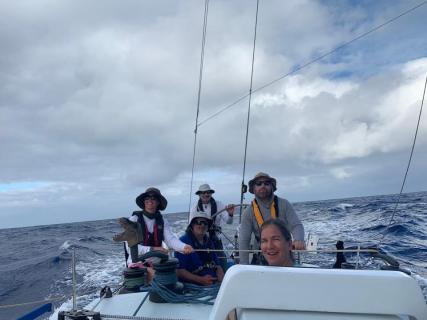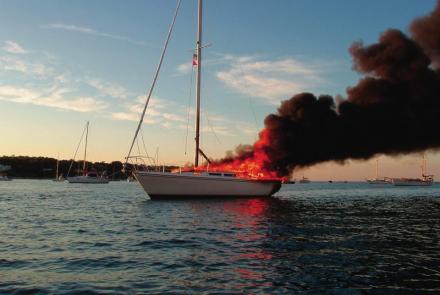Creating a Culture of Safety: The Skipper’s Responsibility
Recommendations by CCA's Safety & Seamanship Committee
Good seamanship demands a culture of safety to prevent serious injury (or loss of life) to all those on board at all times. The skipper is responsible for creating that culture before going to sea and providing leadership before and during each voyage, whether the voyage is an ocean passage, a daysail or a race around the buoys.
The culture of safety includes:
-
Understanding the leadership role that the skipper must play, which includes:
-
- Planning - Determining the objective of the voyage, considering the capabilities and limitations of boat and crew
- Preparing - Thinking through both expected conditions, including weather, that the boat and crew are likely to face as well as the range of unexpected conditions and emergencies, and the actions necessary to (1) prevent and (2) mitigate potential problems
- Risk Management - Making decisions regarding what risks to take, what risks to avoid and how to mitigate the risks that may be encountered. Maintaining situational awareness at all times
- Crew Management - Selecting crew appropriate for the voyage, ensuring they are properly prepared, motivating them and taking steps to ensure their health and safety; designating a second in command in the event of the skipper’s incapacitation.
-
Preparing and proactively maintaining the boat and all safety equipment in good working order appropriate for the range of possible conditions, including (see US Sailing SER also):
-
- lifelines
- jack lines and hard points for tether attachment
- preventers
- medical kit
- life jackets (PFDs, or Personal Floatation Devices), harnesses and tethers
- Lifesling® and other crew overboard equipment
- radios and satellite phones
- EPIRBS (and PLBs, including AIS PLBs if used)
- other emergency signaling devices
- fire suppression equipment
- damage control supplies and equipment.
-
Preparing and training the crew, with special emphasis on practice of both boat handling and personal safety skills, including:
-
- Welcome aboard! Checklist/briefing, including prevention of accidents such as fire, physical accidents, crew overboard and gear failure
- foster a culture that encourages the crew to make regular visual checks of the boat, report potential issues to the skipper, and speak up if they have any other concerns - and listen to them
- operation, inspection, testing and maintenance of PFDs and tethers
- MOB recovery
- seasickness prevention and treatment.
-
At-sea routines, including:
-
- leadership
- situational awareness
- maintaining a lookout
- piloting and navigation
- habitual use of safety equipment
- anticipating weather and wave conditions
- bilge monitoring and bilge pump testing.
-
Dinghy safety
- See CCA Safety Moment - Dinghy Safety Checklist
References and safety training:
- “The Art of Seamanship,” by CCA member Ralph Naranjo, and “The Annapolis Book of Seamanship,” by CCA member John Rousmaniere, contain extensive sections regarding a culture of safety, what Naranjo refers to as “the safety triangle” - vessel, safety gear, seamanship – and Rousmaniere describes as “forehandedness…the skill to manage and minimize risk by anticipating danger.”
- “SOUTH”: The Story of Shackleton’s 1914-1917 Expedition” by Ernest Shackleton - A story of extraordinary seamanship and leadership.
- “Safety at Sea: A Guide to Safety Under Sail and Personal Survival” by US Sailing. This handbook is used in most US Sailing sanctioned Safety at Sea courses.
-
Many boating organizations, including the CCA, New York Yacht Club, Storm Trysail Club, Sailing Foundation and US Sailing conduct classroom, hands-on and online safety training. For a list of US Sailing sanctioned seminars go to: https://sas.cruisingclub.org/courses
It is the skipper’s responsibility to comply with U.S. Coast Guard and other authorities’ requirements.





